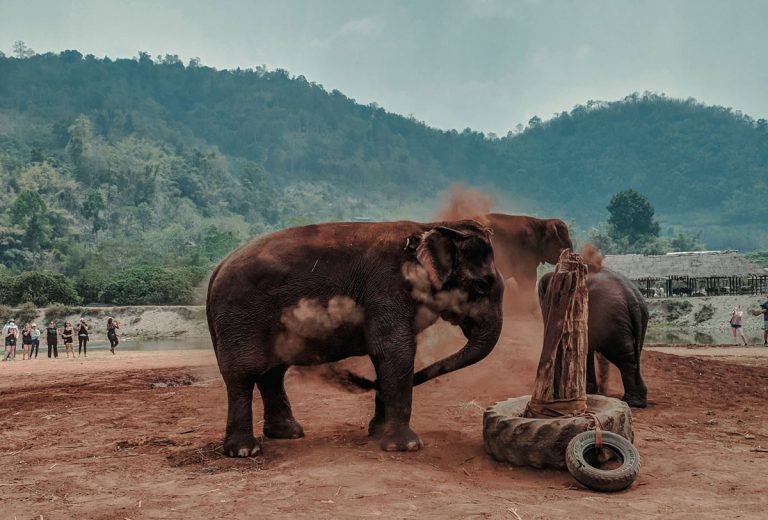Singer Cher greets and sings for Kaavan, the world’s loneliest elephant, after rescue
Kaavan, a 36-year-old overweight Asian elephant who was dubbed the ‘world’s loneliest elephant’ after his partner died in 2012, has now landed in Cambodia. After a seven-hour flight from Pakistan, Kaavan received a warm welcome from American singer Cher, who then accompanied him to a sanctuary housing potential mates.
Pakistan’s only Asian elephant has spent years in grim conditions in a controversial Islamabad zoo where he suffered from a lack of exercise as well as cracked and malformed nails due to living in an inappropriate structure. Understandably, the case of Kaavan prompted global uproar from animal rights groups who petitioned for him to be moved from the zoo. Since 2016, Cher has been part of the social media campaign working towards his relocation.
Earlier this year, Islamabad’s High Court closed the zoo over its poor conditions and gave the animal welfare organisation Four Paws permission to remove Kaavan, who Sri Lanka gifted to Pakistan 35 years ago, when he was a baby, according to the organisation.
Just Came From Meeting To Thank Prime Minister Imran Kahn For Making It Possible For
— Cher (@cher) November 27, 2020
Me To Take Kaavan To Cambodia. Kaavan Will Be Able To Leave For Cambodia On The 29. Think Documentary Will Be Heartwarming🙏🏻.
On Sunday 29 November, Cher travelled to Pakistan to see the elephant off before beginning his plane journey to Cambodia. The pop star even serenaded Kaavan with the song ‘A Dream is a Wish Your Heart Makes’.
Before the flight, specialists from Four Paws trained the elephant for the small enclosure and loud noises he’d experience on the flight, using bananas and other treats. Amir Khalil, a veterinarian from Four Paws shared that Kaavan’s much-anticipated journey was “uneventful” and that the elephant behaved “like a frequent flyer.” “Kaavan was eating, was not stressed—he was even a little bit sleeping, standing, leaning at the crate wall,” he added.
For Kaavan’s arrival in Cambodia on Monday 30 November, Cher waited to greet him at Siem Reap airport wearing a black face mask and waving excitedly at the plane. “I am so proud he is here,” she told AFP, after greeting Kaavan through an opening at the base of the crate. “He’s going to be really happy here,” added Cher, saying she was hopeful his ordeal was now over.
According to a statement from the Smithsonian Channel, which is producing a documentary on the elephant’s story, Cher found out about Kaavan from people on Twitter. “I thought, ‘how can I fix this? How can I save an elephant who’s been shackled to a shed for 17 years and who is a thousand miles away?’,” she said. “This is Free The Wild’s first big rescue and I am so proud.”
Before Kaavan was transported to the sanctuary, monks offered him bananas and watermelon, chanting prayers and sprinkling holy water on his crate to bless him. Non-profit Cambodia Wildlife Sanctuary said in a Facebook post that Kaavan will now live in a huge jungle enclosure, where most of his food will be provided naturally—although he’ll also get fruit treats to “satisfy his sweet tooth.” Three other elephants live at the sanctuary.
Four Paws, along with Islamabad authorities, also safely moved three wolves and some monkeys from the zoo. Two Himalayan brown bears, one deer and one monkey remain in the zoo.






